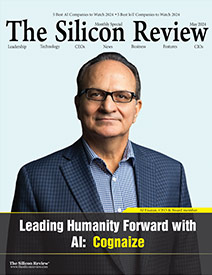>>
Industry>>
Marketing and advertising>>
Understanding Consumer Insight...Understanding Consumer Insights: Strategies from Market Research
The Silicon Review
07 May, 2024
To remain competitive, it is now more important than ever for businesses to know their customers inside and out. Understanding consumer behavior helps companies make well-informed decisions, tailor their marketing strategies, and improve their overall business performance. Market research is key to gaining this understanding, offering detailed insights into consumer desires, needs, and preferences. With the advent of new technologies and methodologies, the role of market research has only expanded, allowing for more precise data collection and analysis.
To help businesses sort through the specifics of consumer behavior and enhance their marketing, this article will explore this topic in more detail. We'll explore different types of market research, methods, data analysis techniques, and how to use these insights to forecast trends and tailor marketing efforts. We’ll show how understanding market research mechanics is key for creating strategies that attract consumers and produce tangible business outcomes.
Types of Market Research
When reviewing market research methodologies, we find various approaches employed by market research companies, each tailored to reveal different consumer insights. Surveys, structured with specific questions, provide quantifiable data that can be analyzed for trends easily. However, they may not uncover the emotional reasoning behind consumer choices. Focus groups assemble a diverse demographic, revealing consumer feelings and perceptions.
This conversational format yields richer details, but it may not guarantee privacy or honesty due to group influence. Personal interviews offer one-on-one interactions that explore individual opinions and motivations, providing a detailed understanding but requiring much time and resources. Observational studies capture real behavior in natural settings, avoiding the biases of self-reporting but often lacking insight into the reasons behind those behaviors. Each method has its advantages and constraints, contributing to a full understanding of market trends.
Analyzing Consumer Data
After collecting data, businesses move to the analysis phase to make sense of the large volumes of consumer data they have gathered. This step involves advanced techniques like statistical analysis and data visualization to uncover valuable insights from the raw data.
Statistical analysis uses mathematical methods to identify correlations, trends, and patterns that might not be immediately visible, providing businesses with evidence-based insights for effective planning. Data visualization turns complex datasets into clear graphical formats such as charts, graphs, and heat maps, making it easier for stakeholders to understand and act on these insights. This structured approach ensures accurate interpretation of consumer data, turning it into strategic intelligence that drives targeted marketing efforts.
Identifying Market Trends
Turning attention to understanding market trends, recognizing the direction of market shifts through consumer behavior data is a key competitive strategy. By carefully analyzing this data, businesses can identify new trends and predict future consumer preferences. This proactive approach allows companies to adapt quickly and effectively, ensuring their relevance in a constantly changing marketplace.
Understanding and predicting these trends isn't just about staying competitive but also about shaping market trends and guiding consumer choices proactively. By incorporating trend analysis into their strategic planning, businesses can improve their flexibility and foresight, establishing a stronger position in their industries.
Personalizing Marketing Strategies
With thorough market research as a foundation, businesses can develop marketing strategies that are not only effective but also deeply resonate with their target audiences. Personalization is key, and understanding segmentation—using demographic, psychographic, and behavioral data—is a must. By precisely categorizing consumers, companies can craft messages that cater to the specific needs and preferences of different groups.
For instance, demographic data can pinpoint age-specific preferences, while psychographic information provides deeper insights into consumer values and lifestyles, enhancing the relevance of marketing messages. Behavioral data, which tracks past consumer actions, adds predictability to strategies, ensuring messages are appealing and timely. This detailed segmentation enables targeted, engaging marketing campaigns that foster stronger consumer connections, increasing engagement and loyalty.
Monitoring Consumer Satisfaction
Our review of market research highlights the important practice of monitoring consumer satisfaction, which enables businesses to continuously enhance their offerings. Understanding consumer satisfaction begins by strategically collecting feedback, which offers direct insights into customer thoughts and experiences. Companies employ many methods, such as surveys, customer reviews, and direct communication channels to gather this data. This feedback is analyzed to pinpoint areas of satisfaction and dissatisfaction.
By acting on these insights, businesses can make informed improvements to product quality, service delivery, and the overall customer experience, aiming to meet or surpass customer expectations. This ongoing feedback loop is key for maintaining relevance and building consumer loyalty, contributing greatly to a company's long-term success. Addressing consumer desires and concerns not only boosts a positive image but also lays the foundation for enduring customer relationships, which are essential in today's competitive market.
Market research is portrayed as an indispensable tool linked to businesses' strategic direction, aiming to decode complex consumer behavior. It reveals various research methodologies such as surveys, focus groups, and interviews, highlighting market research's importance in shaping marketing efforts. Companies leverage insights from market research to segment their market, identify trends, and tailor strategies, leading to enhanced consumer engagement and satisfaction. As businesses adjust to changing market conditions, ongoing market research not only supports decision-making but also stimulates innovation and preserves a competitive edge. Integrating market research into their operations is a must for businesses seeking sustained growth and maintaining customer relevance.









